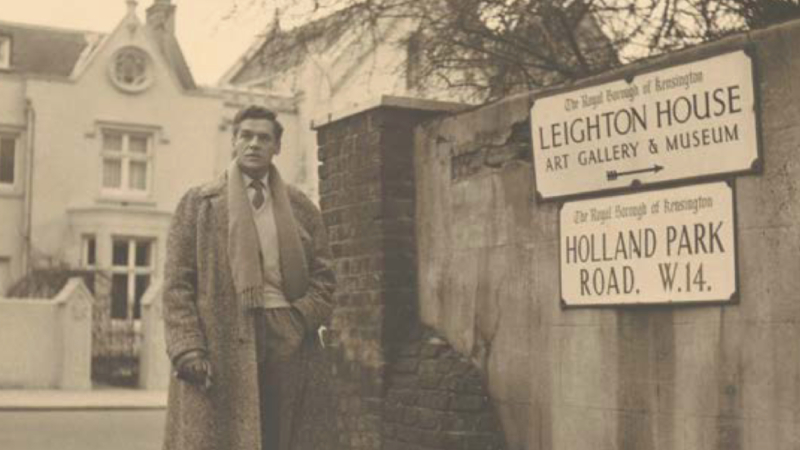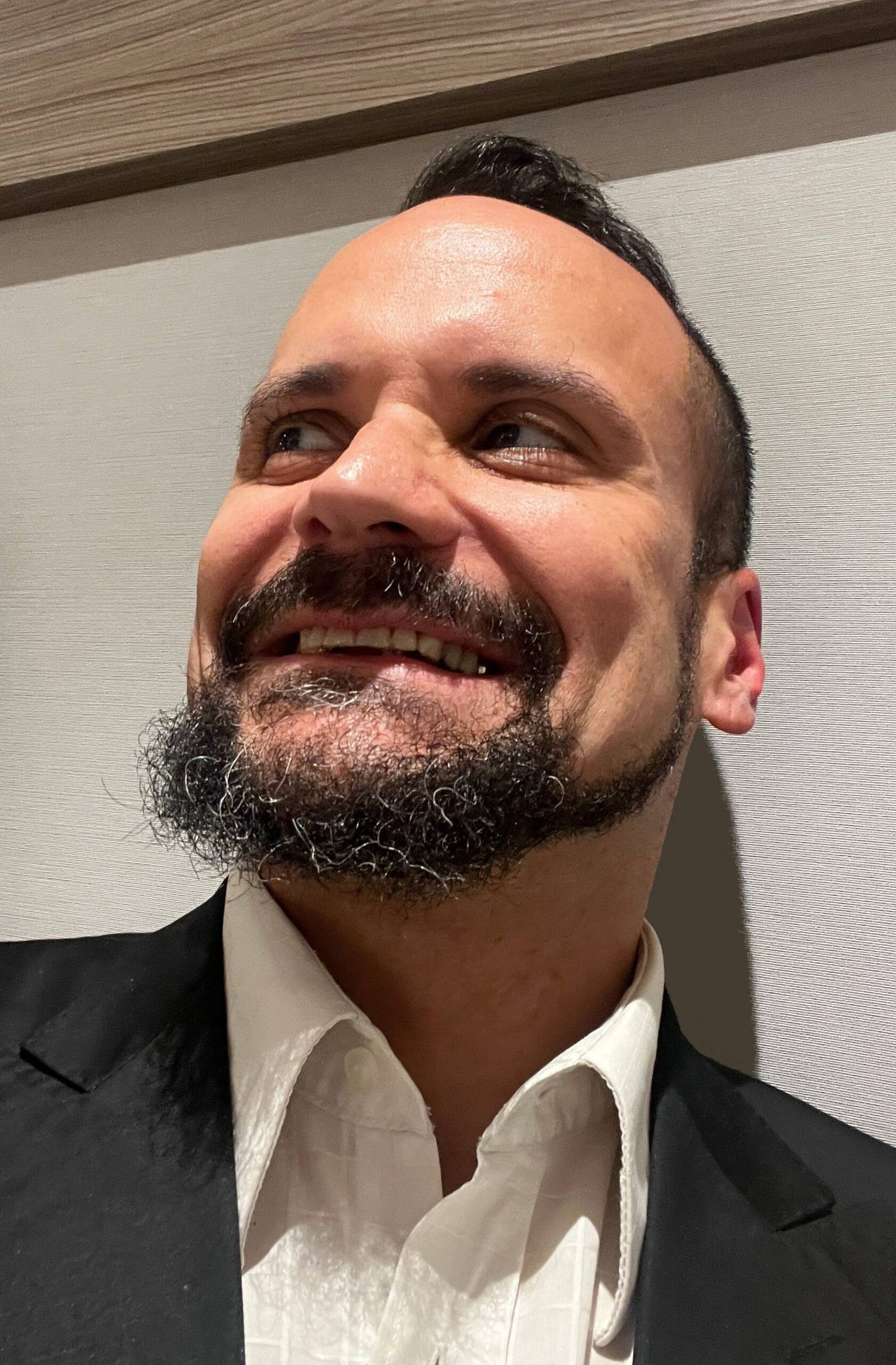




The latest issue of Doesn’t Exist is entirely devoted to the work of Powell and Pressburger, and it features interviews with film historian Ian Christie, journalist and documentarist Mark Cousins and filmmaker Sally Potter. In addition, the magazine includes a recreation Michael Powell’s iconic Peeping Tom (1960) in fashion photoshoot format.
This article contains only the interview highlights. Click here in order to find out more about Doesn’t Exist, and to acquire your luxury hard cover edition right now with the full interview.
…
.
Victor Fraga – The BFI devoted an entire season to Michael Powell and Emeric Pressburger. What should 21st century audiences bear in mind when they watch Powell and Pressburger?
Ian Christie – If you show a film like A Matter of Life and Death (1946) to an audience today, in my experience, they are frequently blown away by the sheer technical skill and the audacity of the film. And then you want to say to them “Imagine what that looked like in 1946, if you can.” You can’t imagine what it was like in 1946 but we can guess that it must have been absolutely mind-blowing. For instance, the late Queen, when she was young, was taken along by her dad to the Royal Command performance showing of A Matter of Life and Death. She saw it as a teenager. I was at one of the Buckingham Palace garden parties: you stand around and meet the Queen, meet the Duke and so forth. The rule is that you’re not allowed to initiate a conversation: you can only speak when spoken to. [laughs] I had this little voice at the back of my head saying, “I’d love to ask her if she remembered that night”, because it must have been a really major event in the lives of the royal family. We know it was because the King actually wrote in his diary about the crowd, which was so enormous in Leicester Square that they feared for their lives, they thought the car was going to be overturned. It was a really major post-war event. I bet you the Queen remembers seeing that film as a teenager. You would, wouldn’t you?
VF – So, you did not break the rules? You never asked her the question?
IC – No, I didn’t. I did meet her later at the Windsor Castle reception but, again, you’re not allowed to initiate a conversation. I was with David Sproxton, the guy who started the Aardman Animations Studio; we were in the queue together, going forward and shaking hands. I said to him, “I really want to ask her a question.” Dave said, “No, it won’t work.” [laughs] Dave and I were in that same reception line. We both had little conversations with the Duke, who did start a conversation, but the queue was kind of pushing as you went through. I think Scorsese put it really well, way back in the 1980s, in an interview we did, in fact, at the NFT in 1985. He said that Powell and Pressburger were “the greatest independent filmmakers in the world” because they took advantage of the incredible freedom that there was just at that moment in time, in the mid-1940s. They knew freedom which probably no filmmakers have really known before or since. They had the backing of the man who owned the whole of the British cinema, Arthur Rank. He was the production company, he was the distribution company, he owned the cinemas – the lot. He had great confidence in cinema, and the confidence that Rank had meant that, really, he would say to them “What do you want to do next?”, and they would say “This”, and he would say, “Right. Do it.”

VF – Can 21st century audiences look at the films the same way people looked 50 or 60 years ago?
IC – No, of course not. I’m a firm believer that spectatorship is always historical. We cannot step into the same river twice. It’s a Heraclitus situation. We can’t see a film as people saw it at any period in time. If it is a 1946 film, every decade that passes distances us from the experience of an audience of 1946. So, we’re seeing through different eyes, we’re asking different questions, different expectations, etc. But the interesting thing about the Powell and Pressburger films is that they aged very well. In fact, I would say in two cases, in A Canterbury Tale (1944) and I Know Where I’m Going! (1945), they have aged better than almost any films of that period. A Canterbury Tale looks way better than when I first saw it in 1978. The film had just been put together again in its original order and everybody was absolutely blown away by it. That deep, deep love and admiration that people have for A Canterbury Tale today is greater because somehow the film just seems better and better. This doesn’t happen with everything.
VF – Peeping Tom (1960) was released in the same year as Hitchcock’s Psycho. The films are equally subversive on many levels. Why do you think Psycho immediately achieved both critical and commercial acclaim while “Peeping Tom failed tremendously at both?
IC – I think that has got a huge amount to do with basically Hitchcock’s know-how in terms of presentation. It’s very easy to underestimate the extent to which the release of Psycho was brilliantly orchestrated by Hitchcock. I mean, we kind of know the facts. The first film that you weren’t allowed into after it had started. The big standees, I’m sure you’ve seen these at the entrance to the cinema, with Hitchcock looking at his watch – so, you can’t go in. Everybody went into theatres at any time in those days. Hitchcock had become a master of stage management. He’d been doing it for years, and he was brilliant at orchestrating the publicity, positioning his films etc. So, he brought all of that to bear on the release of Psycho. So, Psycho was a masterclass in how to launch, as you say, a very subversive film on an unsuspecting public. And perhaps the cleverest thing of all was making it look a bit like a TV movie, which you were seeing on the screen. Peeping Tom had none of that, none of those skills in presentation. In fact, it was thrown at the critics and at the exhibitors, with no preparation.
VF – It’s a huge irony that the biggest casualty of Peeping Tom was Powell himself, wasn’t it?
IC – Yes, he was. But as I often say to people, you have to contextualise that. You have to realise that that whole generation of filmmakers were having problems. It’s a generational thing. Hitchcock had removed himself to America and had made himself impregnable. He was having problems too. He hadn’t changed direction with “Peeping Tom”, he wasn’t invulnerable. David Lean was having problems. Lean, who turns himself into this sort of international superstar director. That only really happens with The Bridge on the River Kwai (1957). He hooks himself up with a studio, with an American producer, Sam Spiegel, and he makes Lawrence of Arabia (1962) and this film turns him into a new kind of filmmaker. Powell and Pressburger had been offered Lawrence of Arabia and they turned it down. They had spent a lot of time thinking about it, and they thought they were better than that. [laughs] So, they turned it down. It’s easy to look back now and say there’s Lean going through the roof with “Lawrence of Arabia” in 1962 and there’s Powell suffering for the sins of Peeping Tom.
VF – Many different artists have confessed to being influenced by Powell and Pressburger, including Scorsese, Kenneth Branagh, Sally Porter, Kate Bush, Jarvis Cocker and so on. What is it that made Powell and Pressburger so universal, both in artistic and geographic terms, or at least both sides of the Atlantic?
IC – Well, it’s the conjuncture of when they’re rediscovered, I think. The classic Powell and Pressburger films of the War years, the mid-1940s, disappear at a certain moment, they’re just impossible to see. You only see them on television, interestingly. And it’s my generation that first sees them on BBC television. Often forgotten, but very important. That’s where I first saw A Matter of Life and Death and films like that, and I became really interested. The films get rediscovered at a very particular moment in time, when British Northern realism has run its course. Those are the classics that people have grown up on and they’re a bit bored with them. I mean, how many times can you watch the Midlands and Northern Realist films? So, that’s been done. The rediscovery of Powell and Pressburger from the late ‘70s, early ‘80s onwards. There’s a big retrospective, which I did at the NFT in 1978 and that’s a bit of an eye-opener. All the cinematheques in the world suddenly pick up on this. So, from 1979 to 1982, there’s about five retrospectives: Locarno, New York, Paris, two or three others. And suddenly, the films are current, and they’ve been shown at festivals and five little books come out.
…
.
The image at the top is by Doesn’t Exist. The other image is a pre-production still from the unrealised Powell and Pressburger film The Loving Eye. Both are featured in the magazine, which you can purchase by clicking here.






